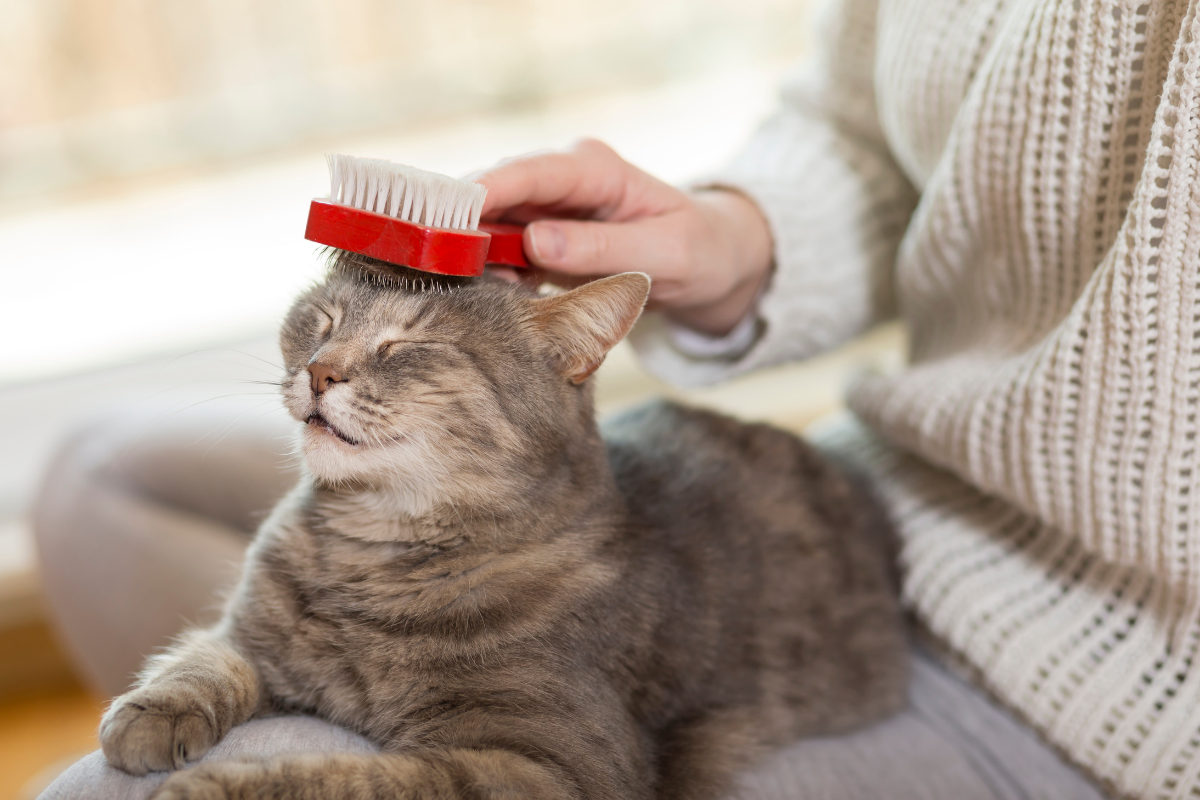Blogging
Crafting Viral Usernames That Leave a Lasting Impression

Introduction:
Usernames are more than just a functional necessity in social media; they are a badge of identity, a projection of our digital persona. Whether you’re building a personal brand, creating content, or simply looking to stand out, a viral username is the key that opens the door to online recognition.
A viral username doesn’t just sit idly on your profile; it actively works for you. It’s the first thing people see when they stumble across your online presence, and often, it’s their deciding factor to follow, engage, or pass by. But what makes a username “viral”? How can you create one that enhances your visibility in a sea of billions?
This guide covers every critical element of crafting and using an unforgettable username for success.
Understanding the Power of a Viral Username
At its core, a username is your digital identity. While its practical purpose is uniquely identifying users, the modern-day username is much more dynamic. It’s your first impression, personal brand’s headline, and ticket to viral recognition.
Viral usernames are easy to remember and resonate with the audience almost instantly. When people come across a username that sticks, it acts as a mental bookmark, making it more likely for them to revisit or engage with your profile.
For instance, usernames like @KingBach or @NiftyKnitter gain traction because they’re catchy, intuitive, and aligned with the individual’s representation. A viral username does the job of catching attention while leaving the audience intrigued to know more.
What Makes a Username Go Viral
Creating a viral username isn’t about throwing together random letters and numbers. It’s a calculated effort based on psychology, creativity, and branding. Here’s what sets a viral username apart from the mundane.
First and foremost, simplicity is key. An overly complicated username can confuse users and make it harder for them to remember or search for you later. A name with a rhythmic or playful twist fares better when sticking in someone’s memory.
Secondly, a good username aligns with your niche. If you’re creating content around fitness, a name like @FlexWeekly tells users exactly what to expect from your page. Similarly, if you specialize in fashion, a username like @ChicThreads immediately sets the tone for your brand.
Lastly, uniqueness is crucial. The online world is flooded with names, but a viral username stands out because it’s different. It can be quirky, humorous, or thought-provoking if it doesn’t blend into the noise.
Practical Tips to Craft Your Viral Username
1. Reflect Your Passion or Niche
Your username should offer a glimpse into your content or personality. Are you passionate about cooking? A name like @KitchenKing or @BakeMagician can be a hit. It allows your potential followers to connect your identity with a clear purpose.
2. Keep It Short and Sweet
Short usernames are often more effective than longer ones. They’re easier to type, remember, and tag. While it may be tempting to include a long description, shorter handles (preferably under 15 characters) tend to have a stronger impact.
3. Add Humour to the Mix
Humour can instantly make a username more memorable. Witty puns, clever wordplay, or double entendres can generate curiosity and engagement. Think names like @PunAndGames or @ToastBoss.
4. Personalize It with Details
Adding an element of authenticity can make your username feel more unique. Incorporating your name, nickname, or a personal hobby makes it relatable—for example, @JohnSketches for an artist or @EmmaRuns for a fitness enthusiast.
5. Experiment with Numbers or Symbols
Numbers, underscores, or symbols can twist an otherwise conventional username. However, use them sparingly; too many special characters can make the username hard to recall or type. A manageable example is GamerX99.
6. Test Your Username Before Finalizing
Before you commit, test your username on different platforms. See if it shines equally well on social media handles, email logins, or as a brand hashtag. A great username works across multiple contexts without losing its charm.
Examples of Viral Usernames That Work
Seeing real-life examples can be incredibly inspiring. Here are some usernames that have nailed it on various platforms and why they succeed.
- @KimKardashian
Simple, direct, and instantly associated with a global icon. It’s as memorable as it gets.
- @TheRock
Dwayne “The Rock” Johnson’s username perfectly embodies his brand. It’s concise, memorable, and instantly recognizable.
- @PlantLady
It is a relatable and recognizable choice for someone in the gardening niche.
- @ArtVibesDaily
Targeted at art lovers, this username suggests consistent, valuable content.
These examples reveal that simplicity, niche alignment, and memorability set these usernames apart.
Leveraging Your Viral Username for Success
Once you’ve crafted the perfect username, it’s time to optimize and capitalize on its potential.
Actively engage with your audience by replying to comments, starting conversations, and tagging other creators. This will keep your username in circulation across different networks of followers.
Also, use your username consistently across all platforms. Whether it’s Instagram, Twitter, YouTube, or TikTok, a unified username builds strong brand recognition and ensures that users can easily find you anywhere.
Finally, ensure your username supports your larger branding efforts. Whether you sell products, create content, or build a personal profile, your username should seamlessly fit into your growth strategy.
Frequently Asked Questions
Q1. Can a username go viral?
A. a username can go viral if it’s catchy, memorable, and resonates with your audience. Viral usernames often encapsulate Humour, creativity, or niche alignment that appeals to many users.
Q3. How important is a username for branding?
A. A username is critical for branding. It acts as the face of your digital identity and creates a first impression. Consistency and alignment with your brand’s goals can make it a powerful tool for recognition.
Q4. Should I change my username frequently?
A. Changing your username frequently can confuse your audience and damage brand consistency. Stick with a username that works for the long term. If you must change it, communicate the decision to your followers.
Q5. What’s the ideal length for a username?
A. The ideal username length is under 15 characters. Shorter names are easier to remember, type, and engage with.
Q6. What if my preferred username has already been taken?
A. If your ideal username is taken, get creative by adding underscores, numbers, or slight variations. For example, if @ArtVibes is taken, try @ArtVibesDaily or @ArtVibes2024.
Blogging
How to Write Engaging and SEO-Friendly Content

Introduction:
In today’s digital world, creating content that stands out is both an art and a science. Writing SEO-friendly content means crafting pieces that rank well on search engines like Google while genuinely engaging and informing your audience. This guide offers a comprehensive roadmap to producing content that balances search engine optimization with user satisfaction, drawing on insights from industry experts, Google’s guidelines, and real-world discussions from platforms like Reddit.
Understanding Search Intent
Search intent is the foundation of effective SEO. It refers to the purpose behind a user’s search query, which can be:
- Informational: Seeking knowledge (e.g., “how to write SEO content”).
- Transactional: Ready to act (e.g., “buy SEO tools”).
- Navigational: Looking for a specific site (e.g., “Semrush login”).
To align with search intent, analyze the top-ranking pages for your target keyword. For example, if you’re targeting “SEO writing tips,” check whether top results are guides, lists, or tool reviews. This ensures your content matches what users expect, increasing its relevance and ranking potential.
Pro Tip: Use Google’s search results to identify intent. If top results for “dog training” are how-to guides, your content should follow a similar format.
Conducting Keyword Research
Keywords are the bridge between your content and your audience. Effective keyword research involves:
- Primary Keywords: Choose terms with a balance of search volume and competition. Tools like Semrush’s Keyword Magic Tool or Google Keyword Planner can help. For example, “SEO-friendly content” might be a primary keyword with moderate competition.
- Secondary Keywords: Include long-tail keywords (e.g., “how to write SEO-friendly blog posts”) and related questions (e.g., “What makes content SEO-friendly?”) to cover the topic comprehensively.
- Content Gaps: Use tools like Semrush’s Topic Research to find topics your competitors rank for but you don’t, uncovering opportunities to stand out.
Example: For a blog on dog training, a primary keyword might be “dog training tips,” with secondary keywords like “positive reinforcement training” or “how to train a puppy at home.”
Crafting High-Quality Content
High-quality content is the cornerstone of SEO success. Google’s E-E-A-T framework (Experience, Expertise, Authoritativeness, Trustworthiness) emphasizes content that:
- Provides Original Insights: Avoid rehashing existing content. Offer unique perspectives or in-depth analysis.
- Demonstrates Expertise: For sensitive topics like health or finance, collaborate with experts or cite credible sources.
- Is Comprehensive: Cover the topic thoroughly. For example, a guide on SEO-friendly content should include keyword strategies, structure tips, and promotion tactics.
- Adds Value: Ensure readers leave feeling informed. Content should be bookmark-worthy or shareable.
Real-World Insight: A Reddit user on r/SEO emphasized that authority often trumps content volume, suggesting that building a reputation in your niche can boost rankings more than churning out generic posts.
Structuring Your Content for Readability
A well-structured article is easier for readers and search engines to navigate. Key elements include:
- H1 Tag: Use for the main title, incorporating your primary keyword (e.g., “How to Write Engaging and SEO-Friendly Content”).
- H2-H6 Tags: Organize sections and subsections logically. For example:
- H2: Keyword Research
- H3: Finding Primary Keywords
- Scannable Elements: Use bullet points, numbered lists, and short paragraphs (2-3 sentences) to improve readability.
- Visuals: Include images, infographics, or videos to break up text and enhance engagement.
Table: Content Structure Best Practices
| Element | Best Practice | Example |
|---|---|---|
| H1 Tag Ascending | Include primary keyword, keep under 55 characters | “How to Write SEO Content” |
| H2-H6 Tags | Organize sections, use for subtopics | “Keyword Research” |
| Paragraphs | Keep short (2-3 sentences) | “Keywords are the foundation of SEO…” |
| Visuals | Use images, videos, or infographics | Flowchart of SEO process |
Enhancing User Engagement
Engaging content keeps readers on your page longer, signaling quality to search engines. To boost engagement:
- Use Storytelling: Share real-world examples or anecdotes. For instance, describe how a small business used SEO-friendly content to double its traffic.
- Ask Questions: Prompt interaction with questions like, “What’s your biggest SEO challenge?”
- Incorporate Multimedia: Add visuals like screenshots of keyword tools or videos demonstrating SEO techniques.
- Encourage Interaction: Invite readers to comment or share your content.
Example: A blog post on SEO-friendly content might include a case study of a website that increased organic traffic by 50% after optimizing for search intent.
Optimizing Technical SEO
Technical SEO ensures your content is accessible to search engines. Key aspects include:
- Title Tags: Keep under 55 characters, include the primary keyword (e.g., “SEO-Friendly Content Tips”).
- Meta Descriptions: Write compelling descriptions under 165 characters (e.g., “Learn how to write SEO-friendly content that ranks and engages.”).
- URL Slugs: Use descriptive, keyword-rich slugs (e.g., “how-to-write-seo-friendly-content”).
- Internal Links: Link to related pages on your site, like a guide on Keyword Research Basics.
- External Links: Cite authoritative sources, such as Google’s Search Central or Moz’s SEO Guide.
Reddit Insight: A user on r/SEO cautioned against overusing keywords, noting that excessive optimization can lead to Google penalties for spammy content.
Using AI Tools Effectively
AI tools like ChatGPT can streamline content creation by generating ideas, outlines, or drafts. However, human oversight is critical to ensure originality and accuracy. For example, you might use a prompt like:
“Act as an SEO expert and write a guide on creating SEO-friendly content with actionable tips.”
Always edit AI-generated content to align with your brand voice and fact-check for accuracy. A Reddit discussion on r/ChatGPTPromptGenius highlighted the importance of unique prompts and thorough editing to avoid generic, low-quality output.
Promoting Your Content
Promotion amplifies your content’s reach and SEO impact. Strategies include:
- Social Media: Share on platforms like Twitter, LinkedIn, or Facebook.
- Email Newsletters: Send to your subscriber list.
- Guest Posting: Write for niche websites to build backlinks.
- Outreach: Use tools like Semrush to identify competitors’ linkers for targeted outreach.
Monitoring performance with Google Analytics helps refine your strategy by tracking traffic, engagement, and rankings.
Conclusion
Writing SEO-friendly content is about creating value for readers while optimizing for search engines. By understanding search intent, conducting thorough keyword research, crafting high-quality content, structuring it effectively, enhancing engagement, applying technical SEO, using AI tools wisely, and promoting actively, you can achieve higher rankings and connect with your audience. Stay consistent, adapt to algorithm changes, and prioritize user experience to succeed in the ever-evolving world of SEO.
FAQ
Q1. What is the difference between SEO content and regular content?
A. SEO content is optimized for search engine algorithms, while regular content may not prioritize discoverability.
Q2. How often should I publish new content?
A. Consistency matters more than frequency. Weekly or monthly posts can work, depending on your niche and resources.
Q3. Is it necessary to use exact match keywords in my content?
A. Natural keyword use is more effective than forcing exact matches. Focus on relevance and readability.
Q4. How can I measure the success of my SEO content?
A. Track organic traffic, engagement metrics, and keyword rankings using tools like Google Analytics.
Q5. What are some common mistakes to avoid in SEO writing?
A. Avoid keyword stuffing, ignoring search intent, publishing thin content, and neglecting technical SEO.
Blogging
Brosse Poil Chat: Your Complete Guide to Brushing Your Cat’s Fur in 2025

Introduction:
I’ll never forget the first time I tried brushing my cat, Luna. She darted under the couch, leaving me with a brosse poil chat in hand and a pile of fur on the floor. Fast forward a few treat-filled sessions, and now she purrs through her grooming routine. In 2025, with pet care spending projected to hit $150 billion globally (Statista), a brosse poil chat French for cat hair brush is a must-have for keeping your cat’s coat healthy and your home hair-free. Whether you’re a new cat owner or looking to refine your grooming skills, this guide covers everything you need to know about choosing and using a brosse poil chat. From brush types to techniques, we’ll dive into expert advice, real-world insights from communities like Reddit and Quora, and the latest trends to make grooming a breeze for you and your feline friend.
Why Brushing Your Cat’s Fur Matters
Cats are natural groomers, spending up to half their day licking their fur, but they still need your help to stay in top shape. A brosse poil chat offers several benefits, as noted by experts like those at the ASPCA:
- Reduces Shedding: Brushing removes loose hair, keeping it off your furniture, clothes, and floors. A Reddit user on r/cats shared, “Since I started brushing my cat daily, my vacuum doesn’t choke on fur anymore!” (Reddit r/cats).
- Prevents Hairballs: By removing excess hair, you reduce what your cat swallows, cutting down on hairballs that can cause discomfort or vomiting.
- Promotes Coat Health: Brushing spreads natural oils, giving your cat a shiny, healthy coat and preventing mats, especially in long-haired breeds.
- Strengthens Bonding: Many cats enjoy brushing, making it a great way to connect with your pet.
- Spots Health Issues Early: Brushing lets you check for fleas, ticks, bald spots, or skin irritations, allowing for timely vet visits.
Regular brushing is especially critical for long-haired cats, who are prone to matting, and during shedding seasons (spring and fall) when all cats lose more fur. A 2024 article from PetMD emphasizes that brushing can also reduce stress and improve behavior by creating a routine your cat enjoys.
Types of Brosse Poil Chat
Choosing the right brosse poil chat depends on your cat’s coat type and grooming needs. Here’s a breakdown of the main types, based on insights from The Spruce Pets and Cats.com:
| Brush Type | Description | Best For | Pros | Cons |
|---|---|---|---|---|
| Slicker Brush | Fine, short wires for removing tangles and loose hair. | Long-haired cats, dense undercoats | Effective for mats, versatile | Can be harsh if used too forcefully |
| Bristle Brush | Soft bristles for gentle grooming and oil distribution. | Short-haired cats | Gentle, promotes shine | Less effective for heavy shedding |
| De-shedding Tool | Specialized blades to remove undercoat hair. | Heavy shedders (e.g., Maine Coons) | Reduces shedding significantly | May be too aggressive for sensitive cats |
| Comb | Fine or coarse teeth for detangling and precision grooming. | Long-haired cats, mat removal | Precise, good for sensitive areas | Requires skill to avoid pulling |
| Rubber Brush/Glove | Soft rubber nubs or gloves for gentle grooming and hair collection. | Skittish cats, short-haired breeds | Comfortable, easy to use | Less effective for thick coats |
- Slicker Brushes: The Hartz Groomer’s Best Slicker Brush is praised for its medium-firm bristles with rubberized tips, ideal for long-haired cats like Persians (People).
- Bristle Brushes: The Mars Coat King Boar Bristle Brush is a top pick for short-haired cats, offering gentle grooming (The Spruce Pets).
- De-shedding Tools: The FURminator deShedding Edge is excellent for heavy shedders, reducing shedding by up to 95% (Chewy).
- Combs: The Safari Coarse Comb is recommended for precision work on all coat types (PetMD).
- Rubber Brushes/Gloves: The Four Paws Love Glove Grooming Mitt is great for cats that dislike traditional brushes, doubling as a furniture cleaner (Chewy).
Example: A Quora user shared, “My Maine Coon’s fur was a mess until I got a FURminator—it’s like a vacuum for cat hair!” (Quora).
Choosing the Right Brosse Poil Chat
Selecting the best brosse poil chat depends on several factors:
| Factor | Consideration | Why It Matters |
|---|---|---|
| Coat Type | Long-haired cats need slicker brushes or combs; short-haired need bristle brushes. | Ensures effective grooming without discomfort. |
| Cat’s Temperament | Skittish cats may prefer rubber gloves; calm cats can handle slicker brushes. | Reduces stress during grooming. |
| Shedding Level | Heavy shedders need de-shedding tools; light shedders need basic brushes. | Matches tool to grooming needs. |
| Ease of Cleaning | Brushes with self-cleaning buttons or washable materials save time. | Simplifies maintenance and hygiene. |
| Budget | Quality brushes range from $5-$40, balancing cost and durability. | Ensures value without compromising quality. |
- Coat Type: Long-haired breeds like Ragdolls need daily brushing with slicker brushes, while short-haired breeds like Siamese do well with weekly bristle brushing (Cats.com).
- Temperament: For nervous cats, try a grooming glove like the KONG Cat ZoomGroom for a massage-like experience (PetMD).
- Shedding Level: Breeds like Maine Coons benefit from de-shedding tools, while less-shedding breeds need simpler brushes.
- Ease of Cleaning: Brushes like the VIOJOJO Self-Cleaning Cat Brush with a release button make cleanup easy (Amazon).
Example: A Reddit user on r/grooming noted, “I got a slicker brush for my Ragdoll, but she hated it. Switched to a grooming glove, and now she purrs through it” (Reddit r/grooming).
How to Brush Your Cat Effectively
Brushing your cat with a brosse poil chat should be a positive, stress-free experience. Follow these steps, inspired by Preventive Vet and PetMD:
- Choose the Right Time: Brush when your cat is calm, such as after a meal or play session. Avoid grooming when they’re agitated or sleepy.
- Prepare Your Tools: Have your brosse poil chat, treats, and a towel ready. A well-lit space helps you spot mats or skin issues.
- Acclimate Your Cat: Start by petting your cat’s favorite spots (back, cheeks, or chin) to relax them. Gradually introduce the brush with gentle strokes.
- Brush Correctly: Move in the direction of hair growth to avoid discomfort. Start at the head and work toward the tail, avoiding sensitive areas like the belly or rear legs unless your cat is comfortable.
- Handle Mats Gently: If you find mats, use a comb or your fingers to tease them apart. Avoid pulling, as it can hurt your cat and erode trust.
- Reward and Pause: Offer treats or praise after each session. If your cat resists, stop and try again later to keep it positive.
- Check for Issues: Look for bald spots, bumps, fleas, or ticks while brushing. Contact your vet if you notice anything unusual.
Frequency:
- Short-Haired Cats: Brush 1-2 times per week.
- Long-Haired Cats: Brush daily to prevent mats.
- Shedding Seasons: Increase frequency during spring and fall.
Example: A Facebook group member for cat owners shared, “My cat used to run from the brush, but I started giving treats after each session, and now she sits still for it” (Facebook Cat Owners Group).
Common Challenges and Solutions
Brushing with a brosse poil chat can come with hurdles. Here’s how to address them, based on insights from Lucky Dawg Salon Grooming and community feedback:
- Cat Resistance: Some cats dislike brushing due to sensitivity or unfamiliarity. A Reddit user on r/cats said, “My cat swatted at the brush until I switched to a softer glove she loves it now” (Reddit r/cats). Solution: Start with short sessions, use treats, and try a gentler brush like a rubber glove.
- Matting in Long-Haired Cats: Mats can be painful and hard to remove. A Quora user noted, “I tried brushing out mats, but they were too tight had to get a groomer” (Quora). Solution: Use a de-matting comb or seek professional help for severe mats.
- Excessive Shedding: Abnormal shedding may signal health issues. An X post warned, “My cat’s shedding got worse until I took her to the vet turned out to be a skin issue” (X Post). Solution: Consult a vet if shedding seems excessive or is accompanied by bald spots.
- Brush Quality: Low-quality brushes can pull fur or irritate skin. A Facebook group member said, “Cheap brushes hurt my cat invest in a good one” (Facebook Cat Owners Group). Solution: Choose reputable brands like Hartz or FURminator.
- Brushing Sensitive Areas: Areas like the belly or tail are often sensitive. PetMD advises avoiding these unless your cat is comfortable. Solution: Focus on less sensitive areas like the back or head.
Future Trends in Cat Grooming
In 2025, cat grooming is evolving with innovative tools and trends:
- Smart Brushes: Brushes with self-cleaning buttons or ergonomic designs, like the VIOJOJO Self-Cleaning Cat Brush, are making grooming easier (Amazon).
- Eco-Friendly Options: Sustainable materials, like recyclable plastics or bamboo handles, align with growing environmental awareness (Chartered Institute of Marketing).
- Steam Brushes: Emerging tools like the Cat Steam Brush combine brushing with gentle misting for easier hair removal, ideal for skittish cats (Amazon).
- Mobile Grooming Services: Professional grooming is becoming more accessible, with mobile services catering to busy owners or anxious cats.
Debates persist about whether all cats need regular brushing, with some arguing short-haired cats are low-maintenance, while others emphasize the health benefits for all breeds (Reddit r/puppy101). The consensus leans toward regular brushing as a key part of cat care, tailored to each cat’s needs.
Final Evaluation
A brosse poil chat is an essential tool for keeping your cat’s coat healthy, reducing shedding, and preventing hairballs. Research suggests that choosing the right brush whether a slicker for long-haired cats or a bristle brush for short-haired ones ensures effective grooming. It seems likely that patience and positive reinforcement make brushing a stress-free experience, though debates about tool choice highlight individual cat preferences. The evidence leans toward regular brushing being vital, with challenges like cat resistance or matting manageable through proper techniques and quality tools. By selecting the best brosse poil chat and following these tips, you can keep your cat happy, healthy, and your home fur-free in 2025.
FAQ
Q1. What is a brosse poil chat?
A. It’s a cat hair brush designed to groom your cat’s fur, reducing shedding, preventing hairballs, and maintaining coat health.
Q2. How do I choose the right brosse poil chat?
A. Match the brush to your cat’s coat type—slicker brushes for long hair, bristle brushes for short hair, or de-shedding tools for heavy shedders.
Q3. How often should I brush my cat?
A. Brush short-haired cats 1-2 times weekly, long-haired cats daily, and more during shedding seasons (spring and fall).
Q4. What if my cat hates being brushed?
A. Start with short sessions, use treats, and try a gentler brush like a rubber glove. Consult a vet or groomer if resistance persists.
Q5. Can brushing hurt my cat?
A. When done gently with the right brosse poil chat, brushing shouldn’t hurt. Avoid sensitive areas and stop if your cat shows discomfort.
Blogging
A Deep Dive into Lisa McNear’s Life and Legacy

Introduction
When you hear the name Tucker Carlson, you might think of heated political debates or prime-time television. But behind this public figure lies a lesser-known story about his mother, Lisa McNear, a woman whose artistic spirit and unconventional choices shaped a complex legacy. Born in San Francisco in 1945, Lisa McNear Lombardi Vaughan was a sculptor whose vibrant, quirky creations earned her a place in the Los Angeles art scene. Yet, her decision to prioritize her art over family life after her 1976 divorce sparked both admiration and controversy, particularly in online discussions on platforms like Reddit and Quora. This article explores Lisa McNear’s journey, from her privileged upbringing to her final days in France, offering insights into her art, her family dynamics, and the enduring questions her life raises.
Early Life and Family Background
Lisa McNear was born on June 4, 1945, in San Francisco, California, to Oliver Maurice Lombardi and Mary Ernestine Nickel. Her family, rooted in California’s elite, had a long history of ranching and business success, providing her with a privileged upbringing in Marin County. Despite this wealth, Lisa’s childhood wasn’t without challenges her parents’ tumultuous marriage ended in divorce, and her mother later remarried. Lisa adopted her father’s surname, Lombardi, and developed a rebellious streak that would define her life.
Growing up in the 1960s, Lisa was drawn to the era’s bohemian culture, which celebrated creativity and nonconformity. This environment nurtured her artistic inclinations, setting the stage for her future as a sculptor. Her early exposure to both privilege and personal upheaval shaped her worldview, pushing her to reject traditional expectations in favor of a life driven by passion.
Artistic Career
Education and Early Influences
After high school, Lisa McNear enrolled at the University of California, Los Angeles (UCLA), where she studied art and design. Some sources, like 49ultra.com, suggest she also studied architecture at UC Berkeley, though her primary focus remained visual arts. At UCLA, she immersed herself in the vibrant Los Angeles art scene of the 1960s and 1970s, a hub of creativity where she connected with influential figures like painter David Hockney.
Artistic Style and Recognition
Lisa’s sculptures were distinctive, often described as “weirdly camp” by Gay Times, a London quarterly that praised her work’s playful yet profound nature. She crafted oversized, vibrant wooden versions of everyday objects think peeled lemons, dice, or household items reimagined with a whimsical twist. These pieces, showcased in galleries in Los Angeles and London, reflected her ability to find beauty in the mundane, a theme that resonated with collectors and critics alike.
Unlike many artists seeking fame, Lisa preferred a quieter approach, exhibiting her work infrequently. Her final show, a joint exhibition with her second husband, Michael Vaughan, at The Redfern Gallery in London in February 2011, was a testament to her resilience. Battling breast cancer, she poured her energy into this display, earning admiration for her dedication. The gallery’s catalogue described her art as “things that have seen life,” a fitting tribute to her creative vision (Find a Grave).
Community Perspectives
On platforms like Reddit, art enthusiasts occasionally discuss Lisa McNear’s work, noting its niche appeal within the 1970s Los Angeles scene. A user on r/ArtHistory remarked, “Her sculptures were like pop art with a surreal edge underrated but impactful for those who saw them.” While not a household name, her contributions added a unique voice to the era’s artistic landscape.
Personal Life and Family
Marriages and Children
In 1967, Lisa McNear married Richard Warner “Dick” Carlson, a journalist and diplomat who later directed the Voice of America. They had two sons, Tucker (born 1969) and Buckley (born 1973). Their marriage, however, ended in divorce in 1976, a pivotal moment that shaped Lisa’s life and her relationship with her children.
After the divorce, Lisa chose to distance herself from her sons, focusing on her art and a new chapter of her life. In 1977, she married Michael Vaughan, another artist, and the couple lived in South Carolina before settling in Cazac, France. This move marked a shift toward a more bohemian lifestyle, far from the traditional family roles she left behind.
The Decision to Leave
Lisa’s choice to prioritize her art over motherhood has sparked debate, particularly in online forums. On Quora, users have speculated about the emotional impact on Tucker Carlson, with one commenter noting, “Her absence likely fueled his views on family values, though he’s also credited her creativity as an influence.” This decision, while liberating for Lisa, left a lasting mark on her sons, particularly Tucker, who has spoken candidly about their estrangement.
Influence on Tucker Carlson
Tucker Carlson has reflected on his mother’s absence in his book Ship of Fools, describing Lisa McNear as a “free spirit” who valued her art above all else. Her departure when he was six years old shaped his views on family, responsibility, and personal freedom. In interviews, he’s expressed a mix of admiration for her talent and frustration over her absence, highlighting a complex emotional legacy.
Despite their strained relationship, Tucker has acknowledged Lisa’s influence on his creative thinking. Her unconventional approach to life, mirrored in her art, may have indirectly shaped his bold, provocative style as a commentator. A Reddit thread on r/TuckerCarlson speculated, “His mother’s free-spirited nature might explain his willingness to challenge norms, even if their relationship was distant.”
Legacy and Remembrance
Artistic Legacy
Lisa McNear’s sculptures, though not widely exhibited, continue to be appreciated by collectors and galleries. Her work, part of the Los Angeles art scene alongside figures like David Hockney, added a playful yet introspective voice to the era. Her final exhibition at The Redfern Gallery in 2011, held just months before her death, underscored her commitment to her craft, even in the face of illness.
Personal Legacy
Lisa’s life story resonates as a case study in the tension between personal fulfillment and societal expectations. Her decision to leave her family to pursue her art was both empowering and isolating, reflecting broader challenges faced by women in the mid-20th century. Online discussions, particularly on Quora “
Financial Legacy
At the time of her death, Lisa McNear’s net worth was estimated at $90 million, according to 49ultra.com. Her estate, settled in Kern County, California, was distributed as if she died without a will, with one-third going to Michael Vaughan and two-thirds to her sons, Tucker and Buckley, who were reportedly no longer in contact. This financial aspect adds another layer to her story, highlighting her privileged background and the independence it afforded her.
Controversies and Community Insights
Lisa McNear’s decision to leave her family remains a point of contention. On Reddit’s r/ArtHistory, some users praise her as a trailblazer who defied gender norms, while others on r/FamilyDynamics criticize the emotional toll on her children. A Quora user noted, “Her choice was bold, but it’s
Table: Key Aspects of Lisa McNear’s Life
| Aspect | Details |
|---|---|
| Birth | June 4, 1945, San Francisco, California |
| Death | October 14, 2011, Cazac, France (breast cancer) |
| Education | Art and design at UCLA; possibly architecture at UC Berkeley |
| Marriages | Richard Warner Carlson (1967–1976); Michael Vaughan (1977–2011) |
| Children | Tucker Carlson (b. 1969), Buckley Carlson (b. 1973) |
| Artistic Style | “Weirdly camp” sculptures of oversized household items |
| Notable Exhibition | The Redfern Gallery, London, February 2011 |
| Net Worth at Death | Approximately $90 million |
Conclusion
Lisa McNear was more than just Tucker Carlson’s mother; she was a woman who lived life on her own terms, embracing her artistry and independence. Her story is one of creativity, resilience, and the pursuit of personal truth, even when it meant diverging from societal norms. While her relationship with her sons was complicated, her legacy as an artist endures, offering a glimpse into a life lived with passion and purpose. For those interested in exploring her art, gallery archives and online platforms like The Redfern Gallery may offer insights, while her life story provides a fascinating backdrop to understanding the complexities of family and ambition.
FAQ
Q1. Who was Lisa McNear?
A. Lisa McNear was an American artist and the mother of Tucker Carlson, known for her vibrant, campy sculptures and unconventional lifestyle.
Q2. What kind of art did Lisa McNear create?
A. She created oversized, colorful wooden sculptures of everyday objects, described as “weirdly camp,” exhibited in Los Angeles and London galleries.
Q3. How did Lisa McNear’s relationship with Tucker Carlson evolve?
A. After her 1976 divorce, Lisa distanced herself from her sons to focus on her art, leading to a strained relationship with Tucker, who later reflected on her influence in his book Ship of Fools.
Q4. Where did Lisa McNear live during her later years?
A. She lived in South Carolina and Cazac, France, with her second husband, Michael Vaughan, until her death in 2011.
Q5. What was the cause of Lisa McNear’s death?
A. Lisa McNear died of breast cancer on October 14, 2011, in Cazac, France, at age 66.
-

 Business Mysteries3 months ago
Business Mysteries3 months agoA Comprehensive Analysis: CBG Gummies: What They Are and Whether They Really Work
-

 Blogging7 months ago
Blogging7 months agoMistyInfo.com – Where Clarity Comes from the Mist
-

 Tech Magic6 months ago
Tech Magic6 months agoAgora06 Demystified: An Extensive Exploration of Its Significance and Applications
-

 Misty Lab7 months ago
Misty Lab7 months agoExploring the Mystique of Foiwaninbez: A Comprehensive Guide
-

 Misty Lab6 months ago
Misty Lab6 months agoUnlocking the Power of 418dsg7 Python: A Comprehensive Guide
-

 Misty Opinion7 months ago
Misty Opinion7 months agoUnlocking Vault Opener NYT Crosswords: Pro Tips to Solve Clues
-

 Startup Stories6 months ago
Startup Stories6 months agoFWD – A.S. Rao Nagar: Innovation
-

 Misty Lab7 months ago
Misty Lab7 months agoLajehgibutmaz: Unraveling Its Mysteries and Significance
